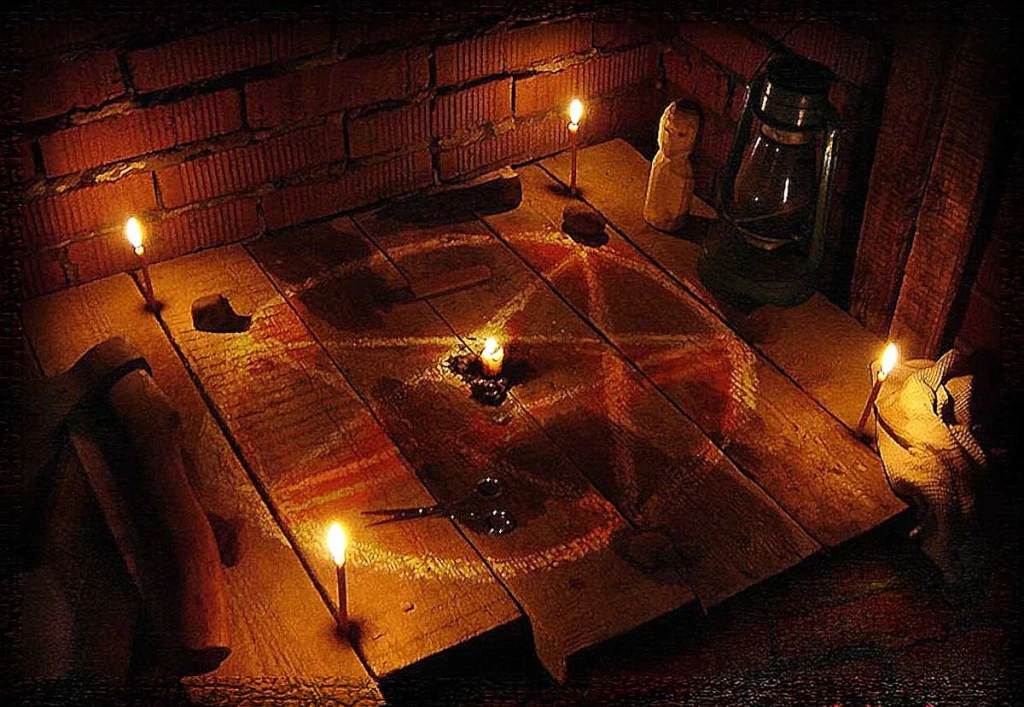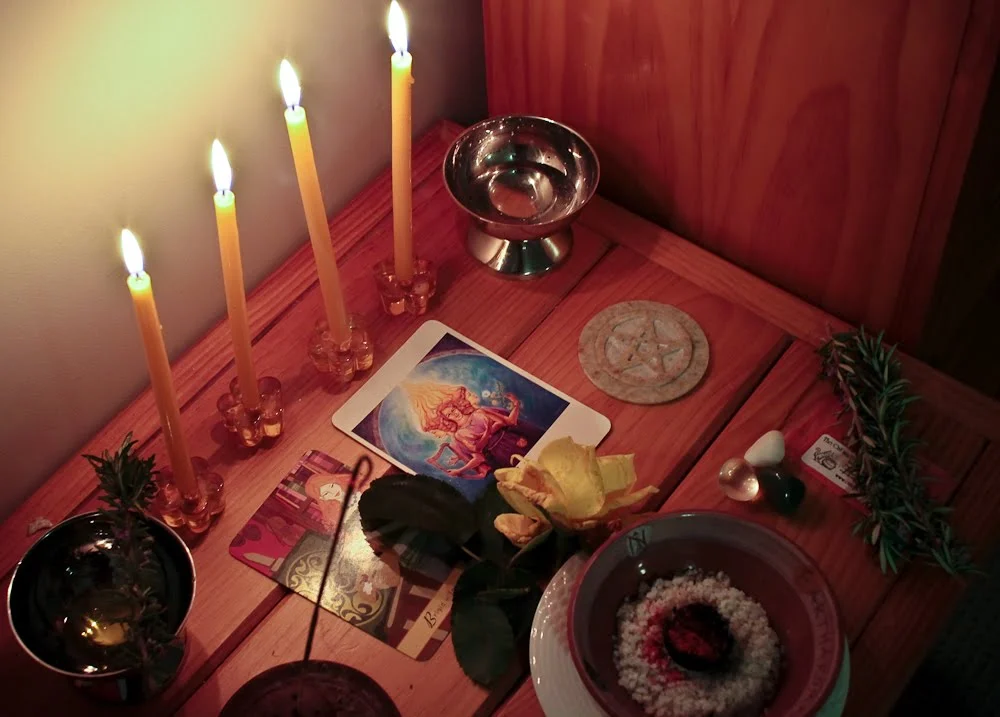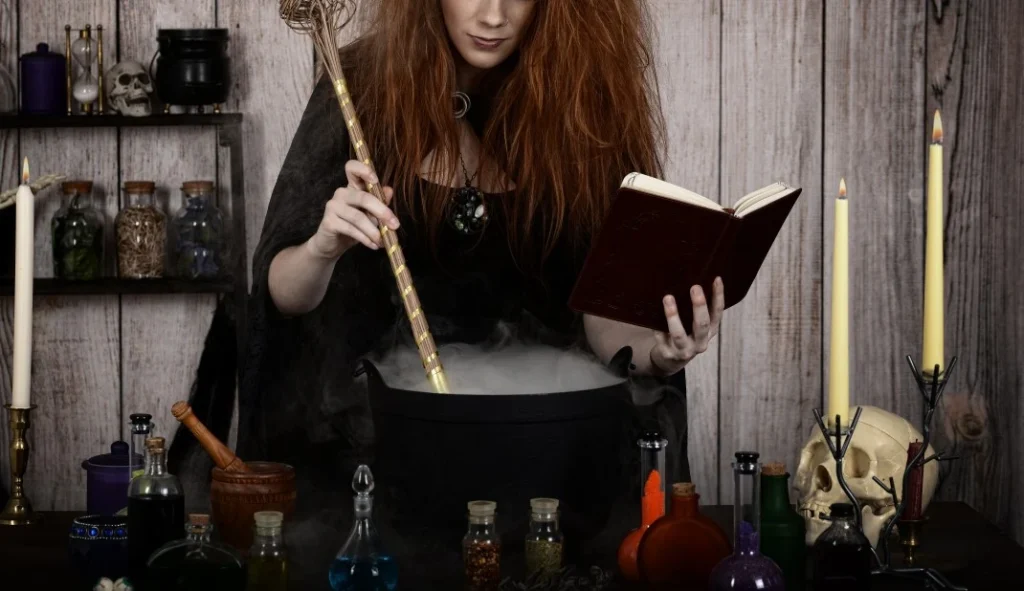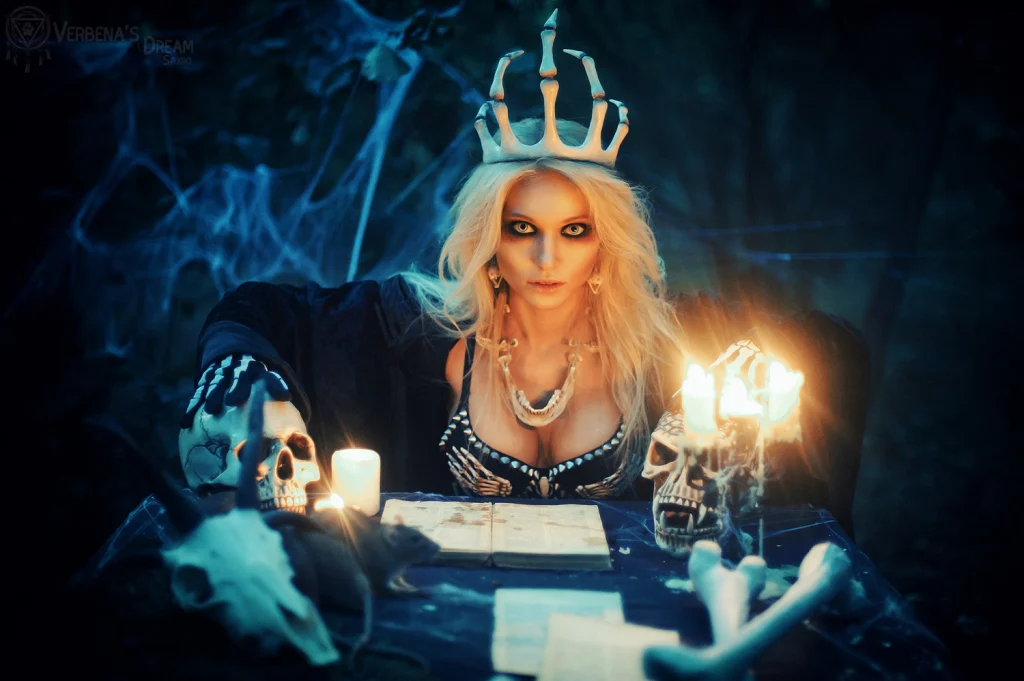Necromancy, the very word carries a weight, a haunting melody that resonates with our deepest emotions. It’s a dance with the shadows, a journey into the unknown, a whispered secret that both intrigues and terrifies the human soul.
In the heart of the night, under a moon veiled in clouds, the necromancer’s incantations begin. Their voice trembles with a mixture of hope and fear, reaching out to the realm beyond life’s final threshold. It’s a cry for connection, a plea to breaching the barrier that separates the living from the departed.
What Is Necromancy Spells?
In the hushed corners of the mystical world, where shadows intertwine with secrets, we delve into the ancient art of necromancy, a path that beckons from beyond the veil of life and death. Gather close, for I shall share with you the whispered incantations and the hidden wisdom of the necromancer’s craft.
Necromancy, the dark art of communing with the departed, is a dance with the spirits that tread the twilight realm. We, the seekers of knowledge, the keepers of the esoteric, wield the power to call upon the souls of the deceased, to converse with those who have crossed the threshold, and to unveil the veiled mysteries of the afterlife.
As twilight falls and the world sleeps, we stand at the crossroads, the boundary between the realms of the living and the dead. With the flickering light of candles and the scent of herbs, we invoke the spirits, drawing them near with solemn words and ancient witch symbols etched upon the earth. In the reflection of a darkened mirror or the flickering of candle flames, we seek glimpses of the ethereal.
But, dear seeker, take heed, for necromancy is not a path for the faint of heart. It is a realm fraught with peril and temptation, where the spirits, like enigmatic shadows, may reveal truths that both illuminate and haunt. To dance with the dead is to navigate a labyrinth of questions, for the answers they bring may forever alter the course of your destiny.
The ethics of necromancy are shrouded in mist, where the boundary between reverence and manipulation blurs. To summon the departed requires respect and care, for the souls of the deceased deserve dignity and serenity. Seek not to command, but to understand, and remember that with great power comes great responsibility.
In the heart of the night, when the stars are but distant whispers, we, the practitioners of necromancy, continue our quest for knowledge. We peer into the abyss, seeking the wisdom that transcends mortal understanding. To tread this path is to acknowledge the eternal interplay of light and shadow, life and death, and to uncover the secrets hidden within the depths of the beyond.


Necromancy spells
Necromancer spells, as depicted in fiction and fantasy literature, often involve communication with the dead, the manipulation of death-related energies, or the summoning and control of undead beings. It’s important to emphasize that these spells are fictional and not based on real-world practices. In reality, there is no scientific evidence to support the existence of necromancy or the effectiveness of necromancer spells. That said, if you’re interested in fictional representations of necromancer spells, here are some common examples:
Summoning the Dead:
Necromancers may use spells to summon the spirits or souls of the deceased to communicate with them or seek their assistance.
Raising Undead:
Necromancer spells might involve raising corpses as zombies, skeletons, or other forms of undead creatures. These creatures can be used for various purposes, such as servitude or combat.
Soul Manipulation:
Some necromancer spells allow practitioners to manipulate or extract the souls of the living or the dead, potentially for nefarious purposes.
Divination and Prophecy:
Necromancers may perform rituals to gain insight into the future or hidden knowledge by consulting with spirits or the deceased.
Cursing and Hexing:
In darker portrayals, necromancers may use spells to curse or hex their enemies, causing them harm or misfortune.
Protection from the Dead:
On the flip side, necromancer spells may also include protective rituals to ward off malevolent spirits or undead entities.
What types of magic is necromancy?
Necromancy is typically considered a form of magic associated with death, the deceased, and communication with the spirits or souls of the dead. It often involves practices such as summoning, controlling, or interacting with the spirits or corpses of the deceased. Different fictional and mythological sources portray necromancy in various ways, but it generally falls into several categories:
- Communication with the Dead: Necromancers may attempt to communicate with the spirits or souls of the deceased to gain information, guidance, or assistance. This could involve seances, rituals, or using tools like Ouija boards.
- Raising the Dead: Some interpretations of necromancy involve reanimating corpses to create zombies, skeletons, or other undead creatures that can be controlled by the necromancer.
- Divination and Prophecy: Necromancers may use the spirits of the dead to foretell the future or gain insights into hidden knowledge. This can be done through interpreting signs or messages from the deceased.
- Curse and Harm: In darker portrayals, necromancers may use their powers to harm others by invoking curses, raising malevolent spirits, or causing harm through the manipulation of death-related energies.
- Healing and Protection: In certain traditions, necromancy can also be used for healing and protection, where the practitioner seeks assistance from benevolent spirits or ancestors to heal ailments or ward off negative influences.


What does a Necromancer do?
A necromancer is a figure shrouded in mystery, a practitioner of the arcane arts who seeks to commune with the deceased. With a heart heavy with longing, they perform rituals and incantations to contact the spirits of the departed. Their actions are driven by a deep desire for answers, closure, or forbidden knowledge that can only be gleaned from the other side.
What is Necromancy in the Bible?
In the Bible, necromancy is explicitly condemned as a forbidden practice. It involves seeking guidance or knowledge from the dead, which is viewed as an affront to God’s divine authority. The emotional undertone here is one of spiritual transgression, a warning against tampering with forces beyond mortal comprehension.
Who is the god of Necromancy?
There is no single god specifically associated with necromancy in mainstream mythology or religion. The concept of necromancy transcends traditional religious pantheons, and its practice, if it exists, is often considered a dark and secretive art rather than a divine worship.
What is the concept of Necromancy?
Necromancy is the profound and often unsettling idea of bridging the gap between life and death. It’s a yearning to connect with the departed, a longing to unlock the secrets of the afterlife, and a fascination with the unknown. The emotional essence of necromancy lies in the tension between the desire for answers and the fear of the consequences of disturbing the natural order.
Is Necromancy good or bad?
The moral character of necromancy varies depending on the perspective. Some view it as a sinister, forbidden practice, while others see it as a means to seek closure and understanding. The emotional debate between the dark allure and the potential harm is at the core of this question.
How can I become a Necromancer?
Becoming a necromancer is a concept rooted in fiction and folklore. In reality, there is no legitimate way to become a necromancer because necromancy itself is not a proven or scientifically recognized practice. It remains a work of imagination, a testament to the human desire to explore the mysteries of life, death, and the supernatural.
Necromancy examples
Examples of necromancy can be found in literature and mythology, such as the witches in Shakespeare’s “Macbeth” or the sorcerer Nagini in the Harry Potter series. These examples evoke emotions of intrigue, fear, and fascination with the power to transcend death.
What role is a Necromancer best at?
In various role-playing games and fantasy settings, necromancers are often portrayed as masters of dark magic, skilled in summoning and controlling undead creatures. They excel at manipulating life force and death, and their emotional resonance lies in the balance between their formidable powers and the moral implications of raising the dead.
Is it illegal to be a Necromancer?
In the real world, necromancy is not illegal because it is not a genuine practice. It is a fictional and mythical concept. However, fictional portrayals often depict necromancy as a forbidden or taboo practice, which adds an element of intrigue and suspense to the stories.
What do Necromancers want?
Necromancers seek a myriad of things—answers to unresolved questions, the comfort of speaking to departed loved ones, power over life and death, or forbidden knowledge hidden in the realm of the dead. Their desires are emotionally complex, driven by a mix of longing, curiosity, and ambition.
What do Necromancers fear?
Necromancers, despite their mastery of the supernatural, often fear the unintended consequences of their actions. They fear the wrath of disturbed spirits, the loss of control over the forces they unleash, and the moral and ethical dilemmas that come with tampering with the boundary between life and death. The emotional core of their fear lies in the uncertainty that surrounds their dark art.
The Books of Necromancy
Necromancy is often associated with dark and forbidden practices involving communication with or manipulation of the dead. it has been a popular theme in literature, fiction, and fantasy for centuries. If you’re looking for books that explore the concept of necromancy or feature it as a central theme, here are a few notable necromancy books:
- “Necronomicon” by H.P. Lovecraft: This fictional grimoire appears in many of Lovecraft’s works and is often associated with dark crystals and occult practices, including necromancy.
- “The Book of Dead Days” by Marcus Sedgwick: This young adult novel blends elements of fantasy and mystery with a protagonist who delves into the mysteries of necromancy.
- “The Johannes Cabal Series” by Jonathan L. Howard: This series follows the adventures of Johannes Cabal, a necromancer, as he attempts to regain his soul from the Devil.
- “Necromancer” by William Gibson: A classic cyberpunk novel that features necromancy in a futuristic setting.
- “The Death Gate Cycle” by Margaret Weis and Tracy Hickman: This fantasy series includes elements of necromancy in its intricate world-building.
- “The Abhorsen Trilogy” by Garth Nix: While not traditional necromancy, the series features a protagonist who is a “necromancer” tasked with controlling the undead.
- “Good Omens” by Terry Pratchett and Neil Gaiman: This humorous novel includes a character named Crowley, who dabbles in dark arts, including necromancy.
- “The Golem and the Jinni” by Helene Wecker: While not a necromancy book per se, it does explore themes of life, death, and the supernatural in a historical setting.
- Necromancy book of the dead:
- the “Book of the Dead,”: also known as the “Egyptian Book of the Dead.” This is a real and ancient funerary text from ancient Egypt, and it is not associated with necromancy as portrayed in fantasy literature.
The Egyptian Book of the Dead is a collection of spells, prayers, and instructions designed to guide the deceased through the afterlife safely. It was meant to help the soul navigate various challenges and obstacles and eventually reach the paradise of the afterlife. The text contains guidance on how to deal with various gods and supernatural beings and how to avoid pitfalls.


Who can do necromancy?
Necromancy, as portrayed in mythology is a concept often associated with dark rituals and forbidden magic involving the dead and the supernatural. In these fictional contexts, it is typically depicted as a specialized and often dangerous form of magic. Here are some common characteristics of individuals who might practice necromancy in fictional settings:
- Sorcerers or Witches
- Necromancers
- Dark Mages
- Cults and Secret Societies
- Ancient Relics and Artifacts


Pingback: The Mysterious Art of Necromancy Spells: Unrave...